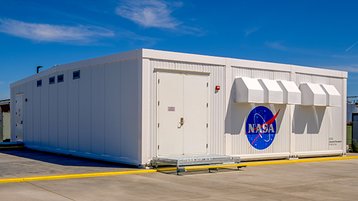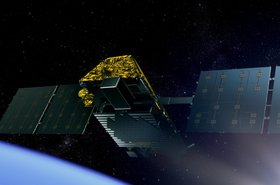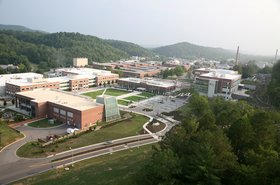NASA has upgraded one of its supercomputers, more than tripling its original performance capability and gaining a new high point on the latest Top500 list.
Aitken’s latest expansion has earned it the moniker ‘NASA’s most powerful supercomputer’ for the first time since its 2019 deployment.
Located in the Modular Supercomputing Facility (MSF) within the NASA Advanced Supercomputing facility (NAS) at Ames Research Center in Silicon Valley, the supercomputer has had an addition of four new HPE Apollo system racks containing 512 Rome nodes, bringing Aitken’s total node count to 3,200 with 308,224 cores.
Named after astronomer Robert Grant Aitken, the supercomputer’s peak performance has now risen to a theoretical 13.12 petaflops, and a sustained performance of 9.1 petaflops, earning it spot number 58 in the Top500 list of the world’s most powerful supercomputers.
When launched in 2019, the system was capable of 2.38 petaflops sustained, and a maximum of 3.69 petaflops; a 2021 upgrade saw it reach 5.80 and 8.33 petaflops respectively.
Aitken is the newest of NASA’s four supercomputers provided by the High-End Computing Capability Portfolio at the NAS facility, including Electra, Endeavour, and Pleiades, the latter of which held the title of NASA’s most powerful supercomputer for the past 14 years.
The 16 percent increase in computing power from the previous expansion will help further NASA research in aeronautics, space exploration, Earth science, and astrophysics. An example of this work is in simulating the launch environment at the Kennedy Space Center for upcoming Artemis missions.
The simulations predict aerodynamic loads on the launch vehicle, mobile launcher, tower structures, and flame trench, and take several weeks across thousands of Aitken’s cores to run.
The expanded Aitken now fills up the first module in the MSF and uses both outdoor air and fan technology to cool water in a closed loop system which removes heat generated by the computer’s processors. According to a Spring 2022 report from NASA, the Aitken module has a PUE of 1.05. Compared to using the same amount of resources in the main NAS building, the modular approach saves 14 percent of the energy needed for cooling, approximately 4.5 million kilowatt-hours, and reduces water usage by 96 percent.







